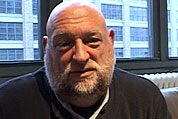Those are memories of a distant past. When the drugs arrived in 1996, they ended this kind of pitiless death and put many AIDS wards out of business. The famous St. Vincent’s seventh-floor ward now houses offices for the orthopedic department. The sixth floor at New York Downtown, the eleventh floor at Beth Israel, the seventeenth floor at New York-Cornell, whole wings at Lenox Hill, Bellevue, and Harlem hospitals—those dire corridors where, in a little over ten years, more than 60,000 New Yorkers drew their last painful breaths—have been cleared out and repurposed. “So much trauma, there was so much history,” says Victoria Sharp, who directed AIDS programs at Beth Israel, St. Clare’s, and St. Luke’s-Roosevelt, “and they’re gone.” Simpson stayed in business by expanding into other areas of neurological research (using Botox to help treat stroke paralysis, for one).
But in the last year or so, doctors have been troubled by the emergence of a new kind of AIDS story. Take the case of James L., 46. After testing positive in 2001, he went on a drug cocktail and life returned to normal with little effort. His exercise regime only intensified. He even went back to school for a master’s degree. At work, he rose to a six-figure position at a telecommunications firm, and his personal life flourished. He was, he told me, “a regular gay male.”

No comments:
Post a Comment